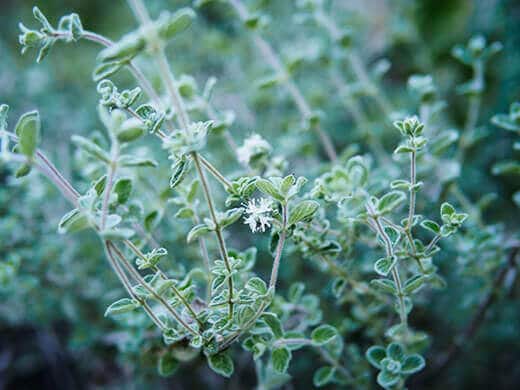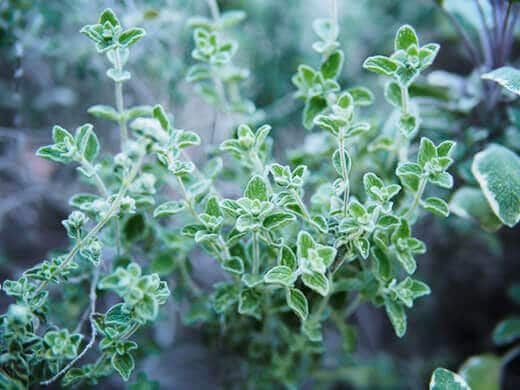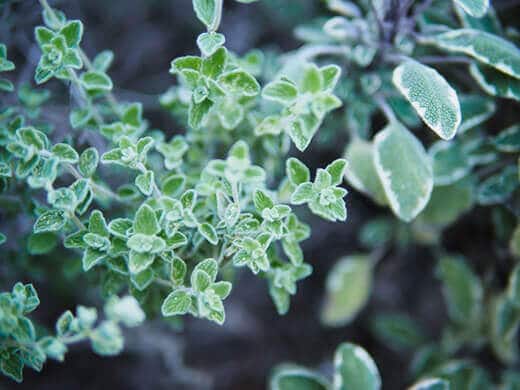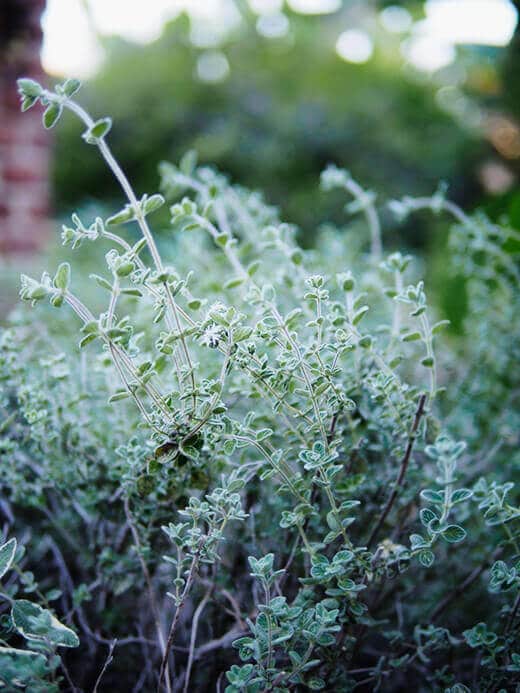I still remember the day I sowed my wild zaatar oregano seeds. I even wrote about them (third post ever on the blog!).
They took a while to germinate and an even longer while to grow into dainty little seedlings, but three years later, those seedlings have thrived into a shrub (more like a few shrubs) that’s surprisingly low-maintenance. The perennial herb doesn’t seem bothered by pests, tolerates infrequent watering, and stays a silvery green year-round in my zone 10b climate.
I’m a slacker in the pruning department, so my wild zaatar seems to be in a constant state of flowering — though that hasn’t affected its growth habit or bold flavor. When I do remember to give the shrub its annual trim (by hacking off the top third of its stems), it grows back bushier and healthier within weeks.


Wild zaatar oregano (Origanum syriacum) is also called Lebanese oregano, Syrian oregano, Bible hyssop, holy hyssop and, simply, zaatar or za’atar, though it’s not to be confused with the Middle Eastern seasoning of the same name. (The spice blend known as zaatar is made from dried zaatar leaves, sesame seeds, sumac, and salt, as well as other spices specific to the region where it’s produced.)


Origanum syriacum grows wild in the mountains of Lebanon, Syria, Jordan and Israel, but has only recently entered cultivation due to increasing demand. While wild zaatar has been used for centuries in labneh (strained yogurt), manaeesh (flatbread), and herbal teas in Middle Eastern cultures, Westerners have begun to take notice of this exotic herb; now, you’ll find it on pizza, popcorn, and baked potato!
The leaves hint of oregano, marjoram and thyme, and have a strong, spicy flavor. Where would you use wild zaatar? Anywhere you’d use one of the aforementioned herbs — it’s similar yet distinctive, and gives great fragrance to a roast or rub. I’ve sprinkled a few spoonfuls of fresh zaatar with carrots and potatoes and tossed a small handful into soups and stews.
If you want to make your own zaatar spice, start with dried zaatar from your own garden for the most flavorful blend. The heady aroma also makes it a good herb for an oil infusion.
If you want wild zaatar in your kitchen garden by next summer, start seeds indoors over winter and wait (patiently!) for them to grow. Transplant sturdy seedlings in the spring, and watch them take off just as your roots and tubers get going in the garden.
Everything will be ready for harvest at the same time, so you can plan a few recipes around them, such as this carrot top salsa! (And once you make the salsa, save the carrot roots for a hearty vegetable soup where you can throw in more herbs.)
















Hi there! Do you know if this oregano is the P73 medicinal variety? I know it’s usually harvested wild, but thought maybe one could grow it, too.
That’s a really good question that I don’t have an answer to. Every source I’ve found online only says that oreganol P73 comes from “wild, Mediterranean-grown high-mountain oregano” but does not specify which cultivars. However, I also read that these species typically grow on alkaline hills in mineral-rich soils. I wonder if those growing conditions contribute to the increased production of carvacrol? I’m not sure if homegrown wild zaatar oregano (from commercial seeds) would contain the same amount of carvacrol. (By the way, wild thyme species also contain P73—it is not exclusive to oregano.)
Can I plant a small plant in the winter in San Diego?
Yes! But if starting from seed, they do better when sprouted indoors before being transplanted outside.
You should give it to your chickens if they are sick. A natural antibiotic.
RT @theGardenBetty: An exotic Middle Eastern herb to try if you like oregano or thyme! Wild Zaatar Oregano http://t.co/6sg1tiE43k #gardench…
An exotic Middle Eastern herb to try if you like oregano or thyme! Wild Zaatar Oregano http://t.co/6sg1tiE43k #gardenchat #gardening
RT @theGardenBetty: What my herb plant looks like now after starting from seed 3 years ago… Wild Zaatar Oregano: An Update http://t.co/hF…
What my herb plant looks like now after starting from seed 3 years ago… Wild Zaatar Oregano: An Update http://t.co/hFzoqLldvE #gardenchat
A Middle Eastern herb that’s found its way into Western cooking: Wild Zaatar Oregano: An Update http://t.co/7vLQs3wZr7 #gardenchat
Three years later, those tiny seeds have thrived into a healthy shrub! Wild Zaatar Oregano: An Update http://t.co/yIWHtS9a74 #gardenchat
Start growing this Middle Eastern herb over winter for harvest in summer. Wild Zaatar Oregano: An Update http://t.co/ZAFmFS7IXz #gardenchat
Laurie Smith liked this on Facebook.
Kitchen Garden Maui liked this on Facebook.
I am going to try these. I read the reviews on the Baker Creek site (awesome place to get seeds btw. I order all my garden seeds from them) and sounds really good. I may replace my Greek oregano with plant….
Thanks for posting about it again. 🙂
I like plants you don’t have to tend 😉
Diana Heffernan-Schrader liked this on Facebook.
Wild Zaatar Oregano: An Update:
I still remember the day I sowed my wild zaatar oregano seeds. I even wrote a… http://t.co/dO0N3lvFZv
Blogged on Garden Betty: Wild Zaatar Oregano: An Update http://t.co/XO7GdPkV6y